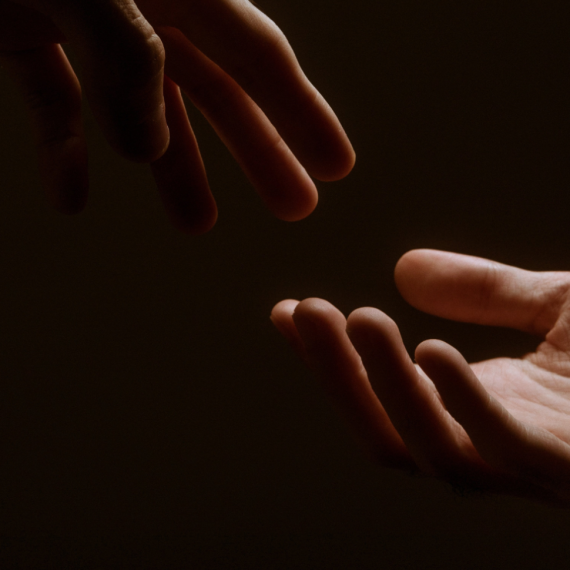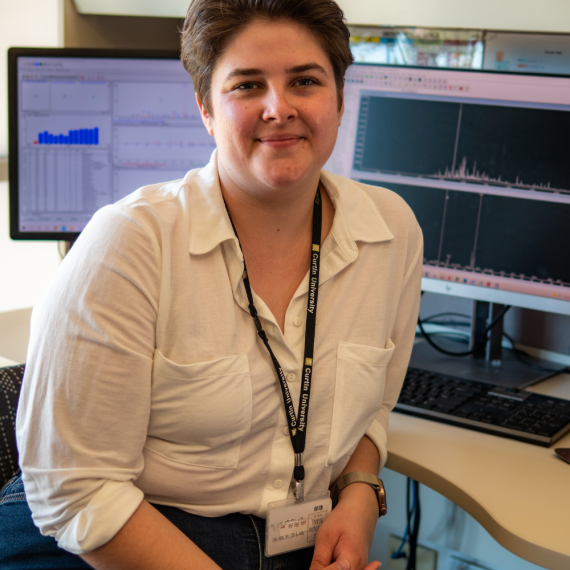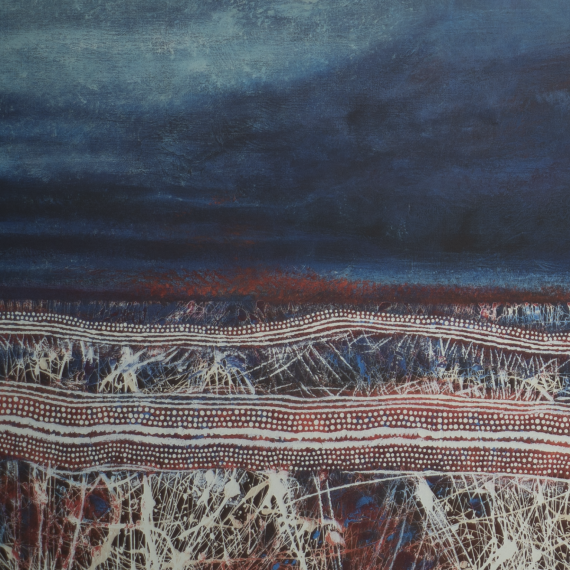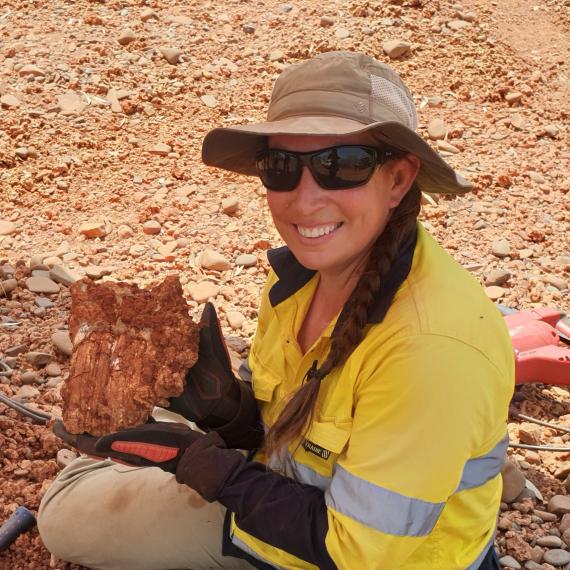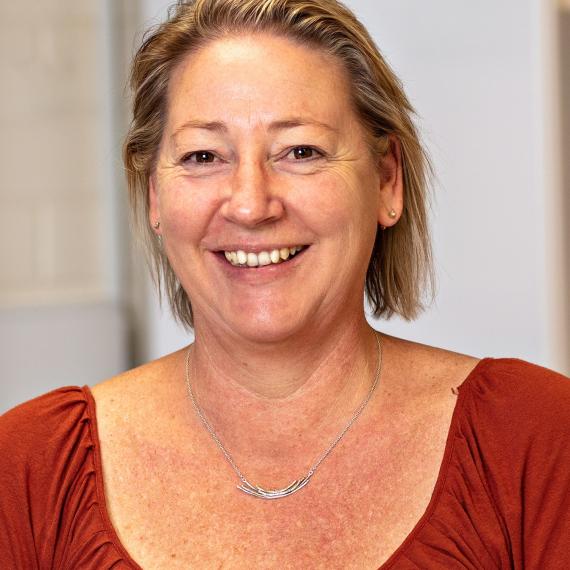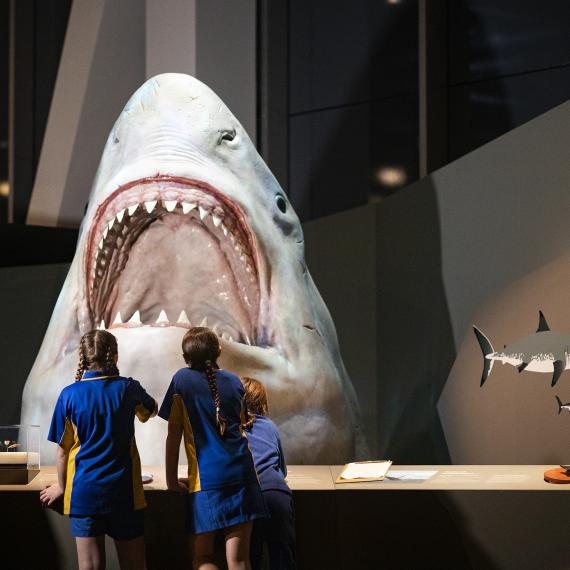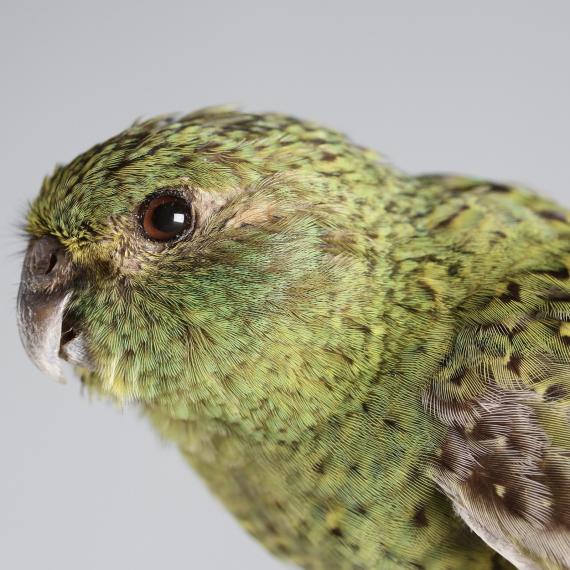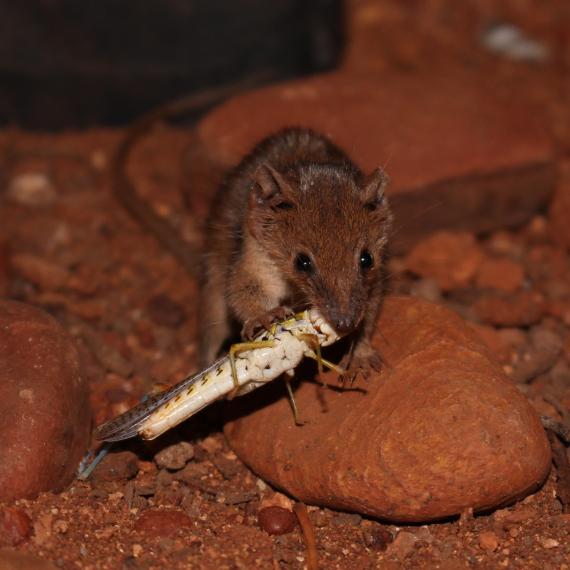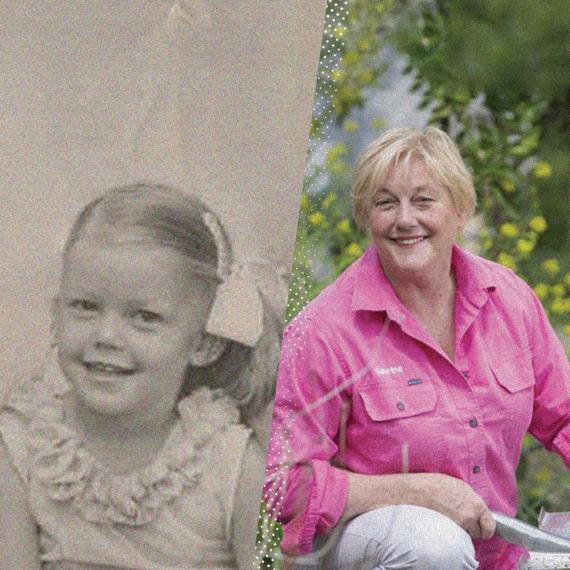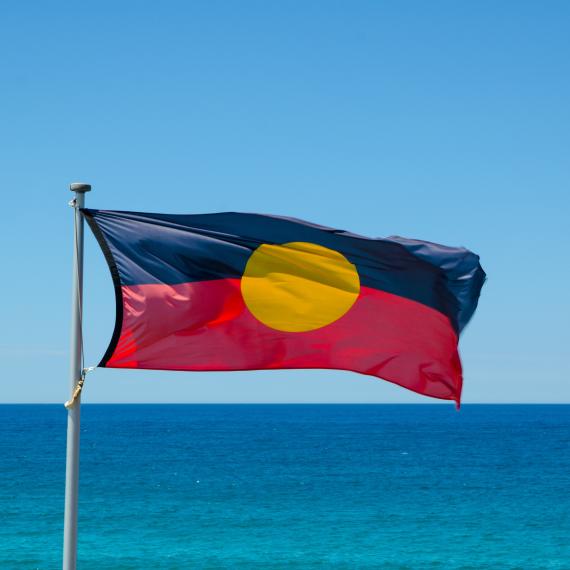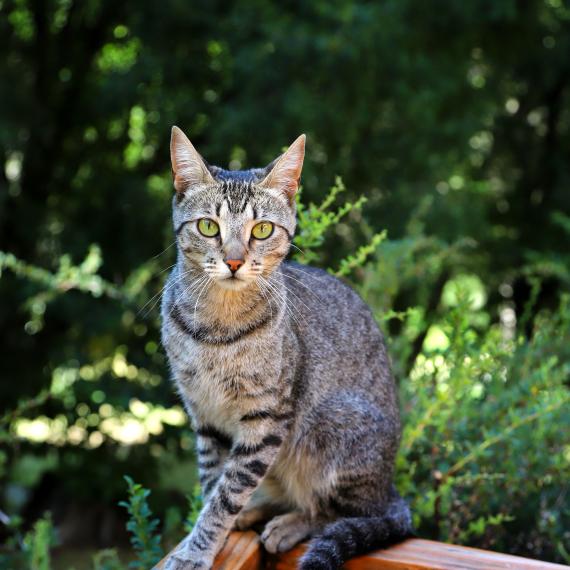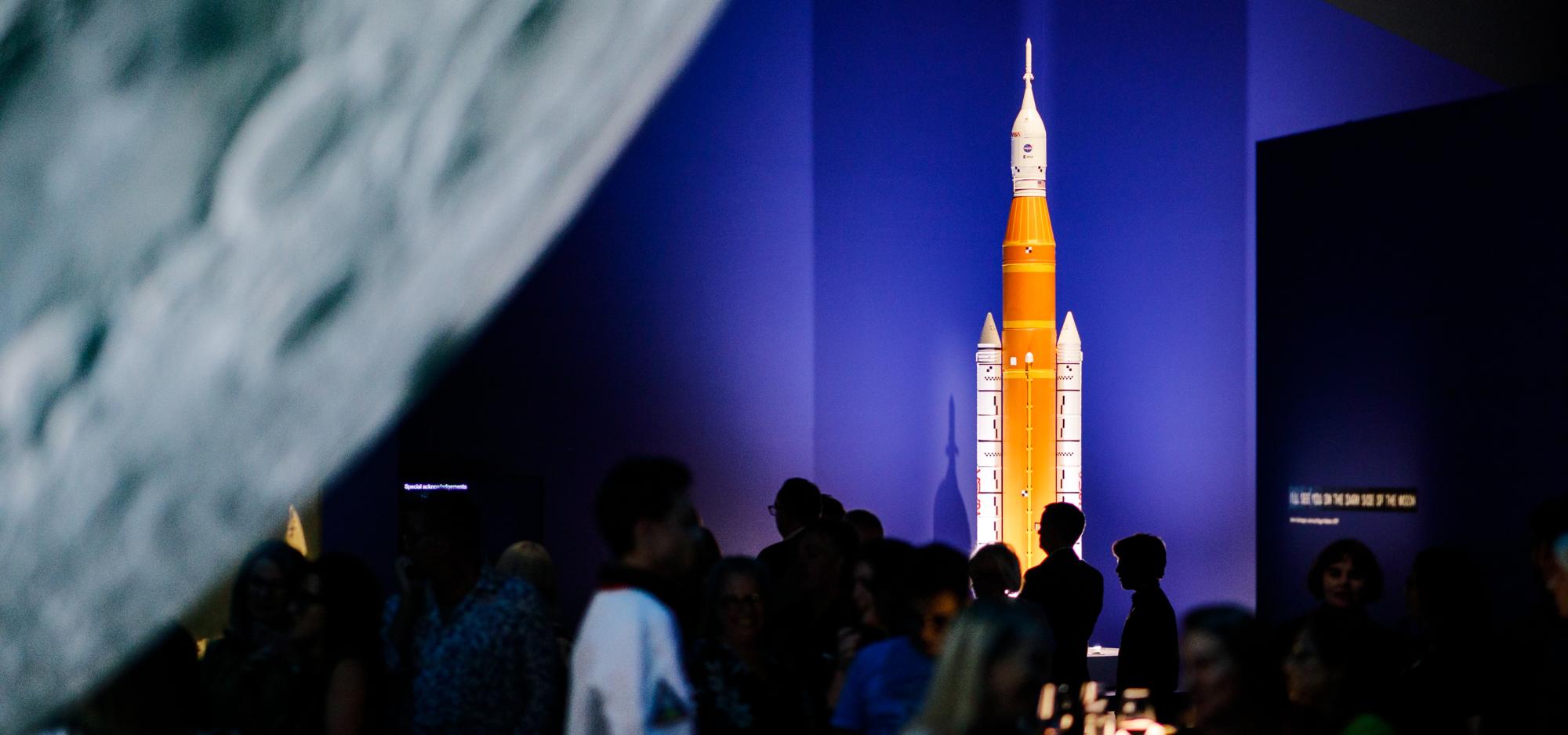
Why Humans Should Explore the Moon
Discover what we can observe about the Moon, learn about our current knowledge, and understand the importance of returning to its surface!
As Earth's nearest natural satellite, the Moon holds a special place in our cosmic neighbourhood. Often considered the child of the Earth and Theia, it has captivated the human imagination for aeons. Despite this fascination, only twelve individuals have set foot on its surface.
Join Gretchen Benedix, Professor at Curtin University's School of Earth and Planetary Sciences, as she explores the mysteries of the Moon. Explore what we can observe, uncover what we've learned, and understand the importance of returning to the Moon.
Meet the Museum
Are you curious about the fascinating world behind the scenes at the Museum? This monthly program delves into the less visible parts of the Museum's work, as scientists, researchers, historians and curators share their expertise and passions.
-
Episode transcript
[Talks Archive Intro music]
You're listening to the Western Australian Museum Boola Bardip talks archive. The WA museum Boola Bardip hosts a series of thought-provoking talks and conversations tackling big issues, questions and ideas. The talks archive is recorded on Whadjuk Nyoongar Boodjar. The Western Australian Museum acknowledges and respects the traditional owners of their ancestral lands, waters and skies.
Cecily Arkell: Okay, good evening everyone. Wow, this is the biggest space I've ever spoken in. I think so, yeah.
Welcome, everyone. And, for this month's Meet the Museum, we are delighted to have Professor Gretchen Benedict. So more about her in a moment.
Our monthly Meet the Museum talks delve into the less visible part of the museum's work as well as, inviting guest scientists, researchers, historians, curators. We’re, we’re.... I was going to say we're not fussy, but we, we that doesn't sound great, does it? We... Sorry, Gretchen.
We love to have a broad range of topics is probably the better way to put it.
So just a little, few housekeeping items before we get started so, restrooms are in the foyer, just outside. Basically, retrace your steps as you came in, and they're off to the left. There are no planned fire alarms, but if you do hear a fire alarm, we are going to follow museum staff.
Okay, so the format of today, I'll give a brief introduction, then we'll have our wonderful speaker, and then we'll have about 15 minutes at the end for your questions and I'll have a roving microphone, this one, and I'll come around so if you can pop your hand up and I'll come to you.
We are recording tonight's talk, so, it's really important that you give me some time to get to you so we can hear your question and then hear Gretchen's answer as well.
So we are, as I said, very excited to welcome Professor Gretchen Benedix. She has quite an amazing bio. So she is the associate deputy vice chancellor of research of Curtin and she's also a member of the space Science and Technology Centre. She is a cosmic mineralogist and asteroid geologist and a fabulous science communicator. I've been fortunate enough to hear Gretchen speak many times.
Her research focuses on unravelling the evolution of the solar system by finding connections between meteorites, asteroids, moons, and other planetary bodies, primarily through geological and chemical pathways.
Whilst her achievements are too numerous to list, some highlights include having an asteroid named after her and also being awarded an Antarctic Service Medal of the National Science Foundation. So it's an absolute delight to have Gretchen presenting for us this evening. Please give her a very warm welcome.
Gretchin Benedix:
Hello. Hello, am I on? Hi. Thanks very much for having me tonight. I'm, very excited to speak to you all today about why we should go back to the moon. And, I also want to offer a bit of an acknowledgment. And I thought, you know, it. We live in such an amazing way. We live on such a made amazing boodjar, and it's been very much cared for and looked after by, the indigenous folks over the years.
And if there are local indigenous folks in the audience, from the Nyoongar, the Whadjuk people of the Nyoongar nation, I've got some words that I thought were good for us all to learn, because space and interacting with space is a big part of humanity over time and so I thought, let's, you know, we can, we can talk about things. We often talk about the Moon and the Sun and the planets. Those are all very westernized or northern hemisphere but I found the these are some words from the Nyoongar nation. So the word for moon, is Mika. The word for star is Djinda, and the word for shooting star is Binar. And if any of you have heard my partner's talks, you know that his cube set group is, is named Binar because those cube sets are like shooting stars.
So I really, I express my thanks and my gratitude, and I pass my respects to all Elders, past and present and to all indigenous folks, wherever they are. So just too much. Oh, I forgot, I have a thing. All right, so just a quick overview. I like to get us kind of in the in the head space of where I'm headed.
I wanted, I wanted to start off with a bit about me and my journey to where I am, but my connection to museums. So while I don't work behind the scenes at this museum, I have worked at other museums and I thought I'd get you up to speed there.
I thought I would do a very short potted history of humanity's interactions with the moon, what we've learned and what we've taken away from that. Then, as part of some of what we've learned, I'm going to subject you to my science because you should all be aware of my science. It’s very important.
And then we're going to go into what's happening next and why we're going back to the Moon and what we have there to do and what's happening to get back there and how soon that’s going to be.
And I just want to acknowledge also what a beautiful backdrop I've got to work with here. For you guys, I'm going to have some interesting images come up and I'm going to have you kind of flip around so you can see some of those interesting things that we're looking at.
So where did I come from? You can probably tell I'm not local. However, I would like to point out that Western Australia and Perth is the longest I've lived anywhere in my life in one state, in one city, in one house. It's, it's quite impressive. So I feel very Western Australian now.
But I am from the US originally and my path to astro geology, which is in the thing. I just made that word up. Except I didn't make that word up. But my path was very windy and sometimes I think it's helpful, especially for young people, to know that you don't need to do a straight path somewhere. You can kind of do a windy path and still get to a place you really want to be.
So I actually, I actually started off in physics. So I did a physics degree and I was doing particle physics. And it turns out particle physics just is like mind blowing. But it basically teaches you all about the things that make up everything else. It's all the atomic bits and everything, the chemical elements, everything that we know about, how things get built up.
But not only that, particle physics is also about kind of the big bang. It's where do all the elements come from? How do they get made? and so that's kind of a starting point. And then as I was going through that, I did a couple of interesting internships along the way, which is my plug for go do an internship.
So after I got my bachelor's I ended up actually going to do a master's degree but this is where I started, started pivoting. So I went from physics. I actually went into engineering, but my focus was actually building on the particle physics. So I was trying to understand how if you send the solar wind so we've got the solar wind, we know what that that looks like. Recently we've had solar activity that has given us a beautiful aurora to have a look at.
That is effectively I was trying to simulate that and hit the surface of an asteroid. So that was where I was starting to get into the space and the understanding of what space rocks are like. And I've always been interested in space. Apparently my first interaction with the moon was when I was one and my mother held me up to the sky at night to say ‘people have just landed on that.’ And I don't remember this, of course, but I feel like it's a really good connection. It probably started me on my path.
But then finally, as I was doing that master's degree, I realized I didn't know anything about the rocks that I was aiming this beam of particles that I didn't know anything about the rocks, but they were pretty.
I thought they were cool looking and I took a geology class and I was hooked. I was like, dude, why don't I start there? But if I had started there, I wouldn't have been in the same place. So I'm glad I didn't. I'm glad I went the way I did.
But that's how I got to meteorites. So I ended up getting my PhD in Geology and Geophysics.
I'm going to back up and show you this picture. Does anybody recognize this rock? [refers to a slide of a meteorite outside Boola Bardip] Yeah, so I worked on that rock for my PhD. My PhD was in Hawaii.
I never came to Australia until 2006, and that was the first time I ever saw that rock. And it was very exciting for me because I, I have had a connection to Australia since the time I did my PhD and I didn't know it. So I love that rock. It's probably one of my favourite meteorites.
So after kind of building up getting my PhD, I started working in a bunch of different areas. But one of the things that had been throughout my entire journey was I interacted with big meteorite collections.
So I went to Johnson Space Centre and I worked with folks there, and they have probably the world's largest meteorite collection because they go to Antarctica every year and they collect meteorites and then they house them at Johnson Space Centre.
But incidentally, when you're at Johnson Space Centre in Houston, you're surrounded by all of the human exploration stuff that NASA does. It's got big rockets,. It's, it's got mock ups of space shuttles. It's got this gigantic pool, which is where they simulate working in space. So hanging out at Johnson Space Centre for kind of any amount of time, is it just kind of rubs off on you and you get kind of excited about space even more so.
After that, the person I had been collaborating with most closely at Johnson Space Centre actually ended up getting a job at the Natural History Museum in in Washington, DC. So after I did a couple of postdocs and got some kind of, you know, actual science under my belt and actually working on some things, I ended up going and doing a visiting scientist role at the National Museum of Natural History which is where I really learned more and more about how to communicate science well and, and to bring people into the museum.
So that they understand that the museum isn't just a place of just storing stuff and putting it on display. There's active research happening. That is what is building up those displays and how they change over time.
You've got people in the back room who are able to look at something, do some work on it, and then present it out to you and it's brand new stuff. And, and I loved that.
And I also loved being able to interact with a meteorite collection that had hand sized chunks of Mars in the Moon that I could actually hang on to, or if I was reading a paper doing a literature search and it was talking about a specific rock, I can go open a drawer and look at the rock.
So I don't know how many of you are geology type folk, but geology has a lot of ‘go where the rock is’ because it will help you better understand what the rock is telling you.
Now with meteorites, they come to us. It's quite fortuitous. We can just kind of hang out and say, oh, great meteorite for us. Yay! We don't know where it came from oftentimes.
So we had this amazing rock we might find, like the biggest gold seam in the entire solar system, because we've got this one rock, but we have no clue where it came from.
So the museum was as close to being a real geologist as I could kind of be at that time because it meant that I could see what was being said and then I could go look for myself. So that was really exciting for me.
After I did the Smithsonian I went and I did some university work for a little while and then I was very lucky to get a job at the Natural History Museum in London, the venerated grandparent of all natural history museum. Just basically, you go in there and you go ‘aaaaah.’
They have not as big of a meteorite collection as the Smithsonian, but it's a very, very healthy meteorite collection that has a whole bunch of the ‘first’s’. So, a lot of the very first meteorites that were used to actually figure out that meteorites come from space rather than having been rocks that were somehow now taken out to sea and then evaporated into the air and then transferred back to the and rained out on the earth.
So, so that was the original theory for meteorites was that they were kind of really, really heavy rain.
That all changed. and, and so that's kind of my journey is being, being able to interact with the, the stuff on the back side and then also looking out, and being able to explain to everybody what it is I'm doing, hopefully in a way that is a interesting and informative and not, you know, like way up here.
So that was my journey there. Museums, they are super fun. Behind the scenes museum tours are amazing. If you ever get a chance, If they ever do that here, try and take it up because it is amazing.
So what I'm going to do now is I'm going to kind of shift gears because my background has been in meteorites, around asteroids and looking at the rocks themselves and then trying to interpret surface information.
More recently, since I moved here, I've actually shifted and I look more at other, other planetary bodies. So I look, but it's all in the service of actually finding that connection. So like I was saying, we want to find where the rock came from. If we don't know where the rock came from, we don't know really what we can do with that info.
I'm just always trying to figure out, where did this rock come from? Where did this meteorite come from? So we know that we have meteorites from the Moon, and we know we have meteorites from Mars. We can find, we can do these amazing detective stories to try and figure out where did these things come from when we have not very much context.
So I'm going to switch to the moon and get you up to speed, and then I'll talk a little bit more about my science.
The Moon has been a big part of humankind for a very long time. This, this, oh, I keep forgetting. I got a thing. Okay, but if I do that. Okay, this thing here, it's called the Nebra Sky Disc.
To be perfectly honest with you all, I found this today when I was pulling this talk together. I've never seen it before in my life [Refers to slide of the Nebra Sky Disk), but it was found and it is possibly the oldest star map in the world. And it's from, it's dating from 1600 BCE. And it is brass or bronze. It's a bronze disc, and it clearly has what looks like a crescent moon shape on it.
The other interesting thing to note is if I can make my thing go think of their special grouping here of seven dots. So Seven Sisters, the Pleiades, the constellation that shows up in many, many, many, histories of understanding the sky and, and the earth, or and the moon. So there's a lot here at could be, this could be the oldest star map. It might not be. Sorry. My microphone took it dip.
All right. and so after that, we kind of started, we were looking at the sky quite a lot, and we interacted with the Moon. And after a time, we worked out that the Moon goes around the Earth and it comes back to where it was and, every once in a while ago from being full and then it'll be dark. It went away. Oh, crap. And then it comes back. And so we start using all of that kind of information to help us understand things.
Galileo was the first person to, you know, build a good telescope and he looked at the moon. These are his actual sketches [Refers to slide of Galileo’s sketches]. So this is and these are images of the sketches of the moon that he made.
And I would guess that it's possible that that there might be that, that feature there which is called Orientale Basin. Not for sure. Could be Tycho, who knows… but it's right there. He, he was able to start looking at the Moon and what he showed with his very rudimentary sketches was that before that, we thought that everything out in the, in the, in space was perfect.
It was perfectly smooth sphere because everything outside the earth must be perfect. And what he showed was that it wasn't perfect. It had all kinds of holes. It had mountains, it had seas. And so that started people thinking, well, what does that mean? And then as we keep going along this next diagram, so that was 1600 C.E.. So we go from before to more recently.
And then this is from 1846 ish. It's looking at the diagram of starting to look at those Moon phases [Refers to slide of phases of the Moon]. Those Moon phases are important. They help us think about things. So over time we use that information and it establishes something.
So based on these really rudimentary things, over that very long period of thousands of years, we built up all this information and what that really led to is almost modern timekeeping. I would argue, the observations of the moon, the observations of the phases of the Moon were used to create time and definitions. Months. The word per month is derived from the word for moon.
These things come together that they're in specific things. We know this happens every 28 days ish, right? And then then we start to notice that, well, at this time of year and the Moon looks like this. Well, okay. So that has happened once and then we're now in this that has happened once. This is how we get to our 12 months roughly. I'm not a time expert, but this is what I'm starting to think is kind of that the Moon and time are inextricably linked in my head now, which will come back around in a little bit.
But after we've kind of gotten that, we've got these mythologies and the mythology, things are there to help us understand some of the features that we see.
Eclipses. What are eclipses? What does that tell us? We've got mythologies that are like, oh, it's a bad omen. Oh, it's a great omen. These things all come into helping us understand.
And, and, but it means we're also observing and trying to figure that out. And then Galileo was the first to show that it wasn't perfectly spherical, like I said, and that started new thinking about what is that? What does that mean? How did how did it form then? And then we have to go through these all these ideas about how it formed.
And moon formation theories were quite interesting up until the Apollo times. The original, the original idea was actually that the Moon I mentioned fissioned off from the Earth. So the Earth was spinning really, really fast in some material fissioned off.
And then the other, other prominent idea was that actually, no, it was an asteroid kind of body that was flying by that got caught up in the in the gravitational pull of, of the, Earth.
So those were the two leading theories for quite some time. And then finally somebody came along and this wasn't until sort of pretty late on and said, well, actually, maybe what actually happened and I'll be showing you some images of this is that it formed because something else smacked into the earth real hard and then that let some material go around and that turned into it.
And that's where our space age stuff comes in. That's where going to the Moon and having a look has been really interesting. And we've learned quite a lot by being able to say, look, the moon has these light bits, these dark bits and what does that mean? What does that telling us? And what does that mean about Earth? What does that mean about the evolution of the solar system? It kind of pulls us all into that.
I haven't been going for 45 minutes. No? Okay, good. My thing is there. Okay. okay. So I'm going to go kind of through… this is a recycling of a Ted talk I did. I'm not going to go into the same level of detail, but I'm going to give you kind of the overview of head space about the moon and what we know about it.
So the way I started that talk was, I said, okay, imagine you're an alien. You're from another planet system very far away. You are explorer aliens. You've been tasked to determine what is going on out in these various other places and your, assignment is the solar system, which we're going to call the solar system for now, because I haven't come up with a good name for it.
Your job is that you get one pass and you can extract information samples from ten places on the surface of the one planet that you can see, but you get one pass. So you don't get to go down and look. You just get one pass. And what are you going to take away from that? What are you going to get?
You get your samples and then you're on. You're going, you fly, fly, fly. You do your analysis because this is obviously space, and we can do awesome analysis while we're flying at the speed of light, and you send back the info to home planet.
Home planet comes back and says, wow, those ten samples very, very interesting. Looks like you've got a water planet there. Because if we look at our planet from space, you would say it's water.
The eye that statistically, if you just pick stuff up randomly, you're going to hit water, which is really helpful when meteorites are coming into the Earth's area because they mostly hit the water. It's kind of handy that way.
But what we think, you know, as humans, we would be like, well, wait a minute, no, that doesn't tell the whole story. You're missing out on all this amazing plate tectonics, all this recycling, the Earth is such a green planet. It recycles all the time. It's all constantly. It's, there's areas where you have huge mountains. You. It just misses the entire story.
And so what I'm here to talk to you about or what I'm here to say, is that when we've gone to the Moon, we have sent humans to the Moon before. They went, they got ten samples. We have ten samples from the surface of the moon that we've collected.
We know where they came from. We have we have many, many other samples that came from the Moon, but we don't know where they came from. There are these ones that come to us fortuitously.
So in order to really unpack this, we've got to understand more about the Moon. So we've got to start with how did it form?
The moon is essentially the child of Earth and this this planetary body called Theia. We've named it Theia. It doesn't exist anymore. It was the size of Mars.
I'm going to show you a video now, but what happened was this Mars sized object…and Mars is no slouch…the whole planet came winging through the inner solar system right around the beginning of the solar system time, so four and a half ish billion years ago smacked into the early Earth, when it was still not quite as big as it is now and still pretty warm, so it was like easy to knock things round, smacked into it, and then that caused a lot of havoc.
And let's see if we can get this video to work.
Does it work? Oh it works. Oh, it comes with music. That's exciting. So this is, this is a video put together by NASA because I feel like, you know, if NASA has done such a great job of putting all of the funding into this and has made it available, let's use it. It's based on real modelling data that has recently, the models are only as good as the resolution that we can, we can create.
And as, as computers get faster and faster and better, we can get higher and higher resolution, meaning we can get to smaller and smaller. Instead of saying, imagine a spherical cow, you can say, oh, actually, I can imagine the legs on the cow, the ears on the cow.
So what this is letting us do is look at really high resolution, how this moon forming impact occurred. But not only that, it's giving us information on how quickly the moon would have formed.
We used to think that this smacking occurred, and then it was very... like a slow process of everything kind of sweeping itself up, the debris changing, and then, you know, after some period of years or something, you would get the Moon. This new modelling says it probably formed in hours. The Moon that we can see out there formed in hours.
Formed as that little, little blob. So that little blob there [Refers to slides]. And then over time, you know, the debris gets swept away. So we would have had a ring system like Saturn to a degree. But Saturn has really cool shepherd moons that keep the ring system there. And we didn't have that apparently.
Okay, so that's the formation of the moon. What do you think that whole system looks like now? Afterwards, what's happening? What does the earth look like? What does the moon look like? Do you think it's all, oh, well, everything looks exactly like it does now.
What we've got then is another movie for you. This is going to show you what the aftermath of that is and what the moon, how the moon changes over the 4.5 billion years it took from that beginning.
But at the same time. The, the same time as the Moon is doing this. So the moon is basically a big molten ball. It's like complete lava. And as the moon is cooling off, it's crystallizing, the Earth doing the same thing, and it's degassing and all of this, all of this heat is getting generated out there.
But as all of that is occurring, we're also getting a lot of impact coming in because this is the early solar system, remember. The early solar system was very, let's say, messy, very messy. It had a lot of material that was flying around and smacking into each other.
The way we build planets is by taking little pieces of dust and putting them together. I don't know if you've ever. Have you guys ever played with liquid nitrogen? Probably not. Yeah, well, if you, if you ever get the chance to like YouTube, what happens to dust when you pour liquid nitrogen on the floor? Basically the liquid nitrogen goes streaming across the floor and all the little dust particles kind of get conglomerate together and get bigger.
So take that, multiply it by a bazillion million and you can create planets. Probably not through a liquid nitrogen methodology, but through some similar thing where things are kind of hitting each other and sticking and they're not going fast enough to, like, bounce off each other so they stick and they get bigger and bigger. But what this video shows you is that that kind of environment is creating what we see on the surface of the moon.
This is all happening at Earth. We don't see the same level of, kind of cratering or, you know, interaction with the with space because we have an atmosphere. Our atmosphere is quite large... stops a lot of the big stuff or the little stuff.
The moon doesn't have that atmosphere, and the moon is not in our atmosphere. It is 250,000km away. It's not in our atmosphere. But what has happened to the moon has happened to Earth.
Understanding that is really, really important because the parts of the Earth that we can't get back to and understand. And this is where I think you need to know time and the Moon, they are inextricably linked. We can help understand this, the evolution of the Earth by looking at the surface of the moon.
So this is the near side of the moon and the dots on here are showing you where we have landed things. This is not totally up to date because we've got a few other ones that have now landed. India has landed at the South Pole. the Japanese have, kind of a lander that worked for a second as it was taking a picture.
The Chinese have, the Chinese three, Chang'e five and 24. Those are the Chinese landers. The sample returns on here are the Apollo samples, the Chang'e five sample and the lunar samples. And I think if I did the maths right, that should be ten. Not all the lunars returned, is my recollection. But what you can see is if you look at that, that's one side of the moon, that's one side of the moon.
And we're looking at kind of the areas that you see where the samples have come from, they're mostly in these kinds of darkish areas. We don't have anything kind of down here in the highlands, so kind of in those areas that basically are safe to land in because when we go to the Moon and we don't really know what it looks like in 1969, we're going to go to where we think it is safest because we don't have the highest resolution images.
These surveyors and, I think there was the Ranger program, they actually to get high resolution images of the Moon, they actually crashed into the Moon. So they would just take pictures as they were crashing and then that allowed some high resolution imagery. But as you can imagine, that's just one region. We now have this image behind you that is an amazing level of resolution for the entire globe and we still have an even higher resolution data set than that.
So what we can see now is quite different. But what you can see is that getting around on the Moon, you got to pick the safest spot. That's where we went.
This is the far side of the Moon. You have never seen this from Earth, ever. This side is never pointed at Earth.
We used to call it the dark side of the Moon. It's not dark. It has. It's. The moon is spinning at the same. It has a spin, but its spin is tidally locked to the Earth such that that one face is the only face that ever faces the Earth. So on Earth, we can't see this. So this side of the moon was not seen until the 1960s when we sent spacecraft there, which is just like, I'm getting goosebumps, I got to say.
So this is another thing to be looking at, because if we had base everything that we were trying to understand about the moon on the other side, you'd have a totally different story. So this tells a slightly different story.
So lets unravel that. This is the Moon but unravelled. So this is basically that image. There is that image I've just stuck it like that. I've highlighted in the big pink box. That's what the near side looks like. That's the side we see all the time. Just so you can see when you look at the whole thing unravelled, you can see those variations pretty well also.
And I've highlighted these two boxes. So this is where time comes in. Now if you were at my TEDx talk, I went through and I kind of explained how crater counting works.
Bottom line is, if you want to figure out ages of things, you've got to use your clues.... right? So if we think about this, if you have a flat surface, if I start throwing things right on this surface, I'm going to break that ice... it's going to break into a couple of big pieces and then probably a lot of smaller pieces.
And if I've got die in the ice, I'm going to see little spots on the floor where those were created. And over time that's going to build up and build up and build up. But let's say I come through with a mop and I just clean off one area so it's completely clean now... but I've got, I'm dropping that ice still. I'm going to have a different level of those numbers of dots. It's basically the same thing.
So if we look at this image first up close, what you see. This image is actually it's like straight up there on the top somewhere. This image is you can see a lot of craters on here [referring to slide of the Moon]. You see a lot of big ones...you see a few big ones, you know, there's kind of this sort of ‘that's pretty, that's something circular’.
We basically are looking for circles, but there's a lot and it goes down to really tiny, tiny things. You can see lots of little tiny things and that's what's happening all the time. And this is the tiny, smallest, smallest stuff actually causes all of that surface stuff to kind of keep roiling and becoming new dust.
This is the other square area [referring to slide of the Moon]. So what you can see here is that this line here kind of is up, up against that more heavily cratered, lots more. But what you're seeing in these dark areas, that's a lot fewer craters.
So what that tells us right then is that the mop came through and cleaned off that area. In this case, it wasn't a mop, it was volcanic activity. It was lava.
So we had big craters that made lots of holes on the near side and then lava was able to fill them up and you've had effectively a new flat surface. So you can start counting again.
Okay. So, take us back to here [refers to slides]. The work that ...I this is the part where I get to toot my horn and say ‘science! Yay!’ But not just science, ‘machine learning, Yay!’
So if we want to count, if we want to figure out how to look at that number of craters that that say, instead of saying older surface, maybe I want to say it's 4.5 billion years old. Or maybe I want to say it's 2 billion years old. I need to count every single crater on that surface down to as small as I possibly can get.
Now, if I were to do that by hand, and the way that that was started in the 60s was literally print out a copy of the map, draw a circle, get a ruler, make the measurement. Draw a circle, make it, and then build up your table.
Okay, we're in the world of computers and big data. We have capacity to teach computers now, to be able to look at an image and recognize things. And as soon as you can teach the computer and it's not... it takes a couple of tries to get it trained, it will actually be able to find the things you want it to find.
And so what we did is we did that for the moon. And this is the image we get if we look at craters only. So what this image is showing you is a colour coded image of...I am running out of time... okay I'm going to wing it.
Okay. Each pixel on there is a number of craters of a specific size and the sizes are very small. But basically what you're seeing is you're seeing the Moon, but from an age perspective. And so we can kind of go through and map that out. So just for context, that big basin, there is this basin here [refers to slides of the Moon] so you can see that it's got multiple colours across it, which is kind of interesting.
So that has showed us that we might be able to use this to help us build road maps on the Moon. So when we go back to the Moon, which is going to happen very, very shortly because of this program.
So this is the Artemis program. This Artemis is twin sister of Apollo. The original moon program was the Apollo program. So this is our return to the Moon, humanity's return to the Moon. This is what we're going to do. We're going to return to the Moon to learn to live on other planets. Because we're humans and we like a challenge. and we don't know what we'll learn exactly, but we know that there's going to be something interesting out there, and it helps to drive us when we have a goal to do something.
But it's also for the benefit, because when we do these hard things, when we do these big, challenging things, things fall out of that that are beneficial, that help us all.
What is Artemis? It is a globally but run through NASA, but it's a global community effort to get back to the Moon and use the moon as a launching point to get out into space.
So if we want to go out into deep space, i.e. past the Moon, it actually is really hard because we have to get launched off the surface of the Earth and the Earth sucks because of its gravity. It's very, very gravity. So it kind of hangs on to things. Get it? It was a joke. It sucks.
Okay. That's it. I'm done. Thanks, mic drop.
So it's really hard to get off the Moon to be able to get off the Earth and go far. So that's why we end up doing these really loopy orbital things to get out into the outer solar system. But if we could launch from the Moon, the Moon's tiny.
All you’ve got to do is like you do, just like your firecracker. And off you go, because you've lost that gravity. And so it's much easier. Now, the issue is that if we want to launch from the moon, we need rocket fuel. So we're going to the moon so that we can understand, we can build all of this up and learn and Artemis includes all these new things.
So we've got a new launch system, a new rocket. We've got a new spacecraft for the crew. We've got new ground systems, we've got, it's opening up to industry, so it's allowing small business to create things that are going to go to the Moon. We're sending humans. We're going to build the base camp.
Why do we want to go to the Moon? We could do all kinds of stuff here, right? We can, but again, the challenge of doing something that's really hard has benefits that fall out of it. And it's it's fun...let's go to the Moon.
It does help us build our careers in STEM when you have some kind of inspiration piece and you were like, oh, yeah, let's figure out how to go do that.
The, the, the creativity that goes into figuring out how to do something on the Moon is enormous and so I think it's, it's great to get kids really interested. And then they sometimes have that idea of continuing and doing the path on.
It advances our civilization. We get opportunity and economic growth. It's it's, it's ...there's been... how does it go? Is it the study is that $1, $1 provided by government to do this stuff results in $3 back. So you actually build economy by support research and supporting space.
And it also allows us to try out new technologies and try them out in weird places. We have we're on Earth, we've got gravity. We don't, we don't know exactly how much that affects everything that we do. So that's kind of fun.
Okay, so what makes Artemus different? Well, it's, it's kind of five-pronged plan. it's, it's not about a race. It's not about going and winning. It's about sustainability. It's about getting there and doing it right and thinking about what the best way is to make that happen.
So we've got Artemis One. It's a five stager. Artemis One has happened. That was the first, flight test. Checked the rocket, checked the, the space capsule. Actually dumped out a whole bunch of tech demo, CubeSat to try and do things as well. So it's, we're, we're figuring out that sustainability piece.
We've got a crew selected for Artemis Two, and that is scheduled for launch, but I can't remember when right now and he'll know [refers to person in slides]...and you can ask him.
And then we've got Artemis Three, which is a bit later, and we're going to get back on the Moon. We're going to have a human on the moon for the first time in 52 years, which is just going to be amazing.
And the first time the human landed on the Moon, the entire globe was excited about that. It was a very exciting, place.
We're going to build a space station that's going to be in orbit around the Moon, which I'm going to show you a video of in a minute. And we're going to be learning how to live and work off planet. We've seen lots of science fiction, and science fiction is awesome, but it's not the reality.
Living and working on the moon is going to be cool.
So this is the first space station to orbit the moon. I remember I was talking to my sister once and she didn't realize that the current space station is only about four kilometres, four, 400km above the Earth. She thought we'd been going to the Moon. This one is actually going to be a space station around the moon.
It's going to allow us to launch things from Earth that can go to that space station. There can be kind of an elevator sort of system. It's going to make things getting to and from the Moon easier. and so it's going to be an amazing piece of tech once it's out there. It's got to have the big solar panels because there are no plugs in space, right? No plugs.
There's no gas stations, no petrol stations in space. You’ve got to take everything with you or figure out how to generate it while you're doing it. So this is going to be the first step of creating that. How do we get things to and from... So you don't have to do big launches from the surface of the Moon. You can do a big launch from Earth, but you don't have to kind of land on the land there.
But we're also going to be building landers that will go to the Moon so that we can build up these bases. So this is, one concept of a lander, which I think we think is Blue Origin's concept. But you can see that the lander is quite large compared to the previous landers, which were probably about that size [refers to sides]... I know I'm going long. I'm sorry, I'm sorry, I'm sorry.
And then and then here's another one. But look at the size of the rocket. Look, this is this is people down here. Little, little, little tiny people. This thing is huge. And just to end, we're going back to the moon because It's important. It helps us to have a goal to strive for, it helps us to have something to aspire to.
And the moon is our nearest neighbour. We've been looking at it for billions of years. It's been part of how we have interpreted evolution of the solar system, evolution of the Earth. It's important that we go back.
This is an image of the. This is the last picture of a human on the moon, 1972, probably Harrison Schmitt. He was the only geologist ever to go to the Moon. Everybody else was an Air Force test pilot, but they learned how to pick up rocks. We taught them.
Anyway. Thank you very much. I'm sorry I went long. Much appreciated.
CA: Thank you so much, Gretchen. your enthusiasm is infectious, that's for sure. If you would like to ask a question of Gretchen, just pop your hand up and I will come to you with the microphone.
GB: Locked and loaded
Audience member:
What if you just dug through, like, dug into the moon?
GB: What if you dug into the moon? Well, it depends on where you are... But you, You. It's like the earth. It's dirt and then it's rock, and then you, If you keep digging, you'll get to, to more rock.
And then at the very middle, there might be some iron, like the core of the earth, but it's very similar in terms of the kinds of rocks that are there. What's interesting is that we think there's ice there, and ice is actually rocket fuel, if you think about it, water, what's the what's the composition of water?
And it turns out that rocket fuel is basically hydrogen and oxygen. And if we can get that on the surface, that's going to be really helpful. So if we dig down deep enough, we might hit a layer of ice. We know there's areas where there's ice. But if you dig on the Moon the top bit is going to be like sand, but even finer grained.
And then you get below that and it's going to be rocky. And then you get below that, and then it's going to be really rocky.
Audience member: [Audio off mic] A few but I’ll ask one I'm interested in. Why or how did the spin of the Moon be what it is to match the same face to the Earth. Has everyone, has anyone worked that one out yet? [GB: Yeah] I like the video. That was really good. So I guess, is it just a freak or...
GB: No it's not. It's actually I looked this up. So after I did my TEDx talk, I had a similar question and I, I did end up looking it up. I knew it was physics. I knew that it's mathematically what happens. And it it's a function I don't... it's a function of the mass difference.
And so the Moon is smaller. So it, it they both tug on each other, but the Moon gets tugged on at a slightly higher... I don't know... it's a higher force, but that ends up kind of causing it to slow down to match a thing.
Some of the moons of Jupiter are in the same kind of thing. So they they're tidally locked with respect to where they are, to Jupiter.
But I read through and I thought, well, okay, so the next question for me was, well, if given enough time, i.e. the age of whatever, would everything become tidally locked? And yes, so we could become tidally locked to the Sun.
I don't think we... I don't think the solar system is going to last long enough for that to actually occur mathematically, but it's, it's this mass difference and it causes the tides pushing and pulling.
So it's a great question, and I'm glad that I looked it up [LAUGHS].
Audience member: So Am I.
Audience member: Yeah. Very exciting. can you tell me how integrated China is into the Artemis program?
GB: No, not at all. So the Artemis program is very Western, as you might imagine. China is doing a fantastic job, though. And, and we have, so, so politics aside, so politics means that China and the US don't talk here, but science exists and science says China and the US and everybody else talk and are able to interact.
So we have colleagues that are actually working with the Chinese on their missions as well.
The Chinese have their own set up, their own mission plan and timeline, which is, available online. You can see what their plans are.
So they've just launched Change’s 6 six and that's going to land. And I don't think it's bringing back material, but it's another lander.
And they have a whole plan for the Moon and for Mars as well.
I think the politics is whatever it is. And the problem with the politics is that that's where a large amount of the funding comes from. So, but at the science level, the scientists talk to each other so the scientists can interact and they can talk about going and what this sample means.
And they talk to each other. And so the the information gets translated.
Audience member: I've heard astronomers suggest it would be really nice to have something like a radio telescope on the other side of the moon. Is that and how much they could learn without the radio interference on Earth. Do you think that would be a good reason? Maybe you've answered it already.
GB: Yeah, I think I think that is on one of the plans is to aim towards that. It's not, it's not a, you know, near term, but it's a it's a farther term idea of, yeah, put it out there because as we know, it's tidally locked. That means it's never going to, it's always going to be facing out and we'll be away from that.
The issue with it is that how do you get the information back to Earth, because it's always facing away from Earth. And the way we transmit information is through signal and antenna. And if you can't get your signal to see your antenna, that becomes difficult. But you can you can do things like really long wires to the space station or all the way back.
Yeah, yeah, that's less, less, less helpful. But yeah, we can get it back to where we are getting power and things like that. So I think I, it is something I've heard is on the cards. Definitely.
It'll be interesting because it's a big infrastructure project and we got to figure out how to live there before we go build a big infrastructure project.
Audience member: I had a question about meteorites. You were talking about meteorites that come from the moon and come from Mars. Of the ones that we've got and collection we know about, like, would the bulk of them be from places we don't know?
GB: The bulk of them are from asteroids, but we don't know which specific asteroid. So we have around 75,000 meteorites in the world collection, which, by the way, that number is massive Since the time I started doing my work.
I think when I started doing my work, we might have had... I don't know, 30,000 in our collections. 75,000... I mean, admittedly, I've been doing this a while, but it still is a pretty high rate of collection.
Most of those come from, asteroids, and we're not 100% sure which specific asteroid.
We think we know one asteroid meteorite collect connection. So there's a the, the third biggest asteroid is called 4 Vesta, and it's... we send spacecraft out, and they did a big check on everything.
But about 20 years ago, or maybe even before that, we were looking at it and going, ‘this can't be from the types of asteroids that other meteorites are from. This looks very different. And oh, that asteroid out there looks similar when sunlight's reflected off the surface, we can see that it's this composition, oh, that matches 100% . So we think they're related’. And then the spacecraft went and then we learned more about that. So we're still pretty positive about that.
We don't really have... what's interesting is the more recent sample returns from asteroids have helped us to kind of pinpoint what that composition of the sunlight reflecting looks like and so the recent U.S. mission, OSIRIS-REx and the recent Japanese mission, Hayabusa2, the two samples, the two media are the two asteroids they brought samples back from are quite interesting and it's going to.... it's looking like, we'll be able to better understand when we look at other asteroids out there.
So it's hard to say. but we know they're out there.
CA: Okay, we probably got time for one final question.
Kid in Audience: How do you stay on the moon? Since there's no gravity?
GB: There is some gravity. It's, it's just less. So the moon is about a six the size of the Earth, and therefore it has a gravity, a six the size of the Earth's gravity.
So on the Moon, when you walk, if you're used to walking because you grew up in high gravity, when you walk in the Moon, you actually end up bouncing. So you kind of jump, you kind of bounce.
And that was one of the things the astronauts had to figure out when they first went, because when they got up there, it was.... there's so much dust.
So that top layer of dust that's everywhere, and that's doing a bunch of things. They had to actually figure out what was the best way to move around and it turned out hopping like a bunny was the best way. They got as far as they could. So good question. So you can still walk, but it's a different feel and you feel different.
CA: Well, thank you so much, Gretchen. And can we show our appreciation for Gretchen's amazing knowledge tonight.
Thank you very much.
[Talks Archive outro music]
Thanks for listening to the talks archive brought to you by the Western Australian Museum Boola Bardip.
To listen to other episodes, go to visit.museum.wa.gov.au/episodes/conversation where you can hear a range of talks and conversations. The talks archive is recorded on Whadjuk Nyoongar Boodjar. The Western Australian Museum acknowledges and respects the traditional owners of their ancestral lands, waters and skies.
More Episodes
Gender-related violence isn’t talked about often enough, but it happens in WA. Often, conversations centre on victims and perpetrators, warning signs and cycles, breaking points and crises. But what happens next? How do we move toward recovery, reconciliation, and positive change?
We know ferns have existed on Earth for millions of years, but just how closely do ancient ferns resemble modern ones?
By drawing on First Nations knowledge systems, cultural practices, and research methods, this presentation will showcase how climate adaptation and mitigation strategies that respect and integrate Indigenous knowledges and practices can help sustain well being.
Have you ever wondered what it is like working with fossils every day? Helen Ryan from the WA Museum shares her work in discovering, uncovering, preparing and preserving ancient life.
Hear from Dr Amanda Ash from Murdoch University’s School of Medical, Molecular and Forensic Sciences as she delves into the complexity of parasites and their importance.
Join us for a journey into the ancient world with Dr José Galán, a renowned Spanish Egyptologist and director of the Djehuty Project.
Curious about the creators behind our Megalodon head in the Wild Life gallery? Join the makers from CDM: Studio and peek behind the scenes as they share their process of designing, building and delivering museum exhibits.
Discover the elusive Night Parrot at WA Museum Boola Bardip! Join us for an exclusive panel discussion with experts Penny Olsen, Allan Burbidge and Rob Davis.
Join Museum experts Jake Newman-Martin and Linette Umbrello as they take us on a mammalian adventure of the minute kind, from tiny marsupials to giant megafauna.
Discover the remarkable story of Wayne Bergmann, a Nyikina man and Kimberley leader who has dedicated his life to his community, in this moving memoir of living between two cultures.
Celebrate Perth Design Week with a robust panel discussion focusing on design and business.
Talk series hosted by Geoff Hutchison that explores who our young selves were and what became of them. This week hear from Sabrina Hahn.
How much will we look to the language of activism in finding the way towards reconciliation in Australia?
Navigating the delicate balance between the preservation of the Conservation Estate and our cherished and loyal feline companions is both a challenge and a responsibility.
